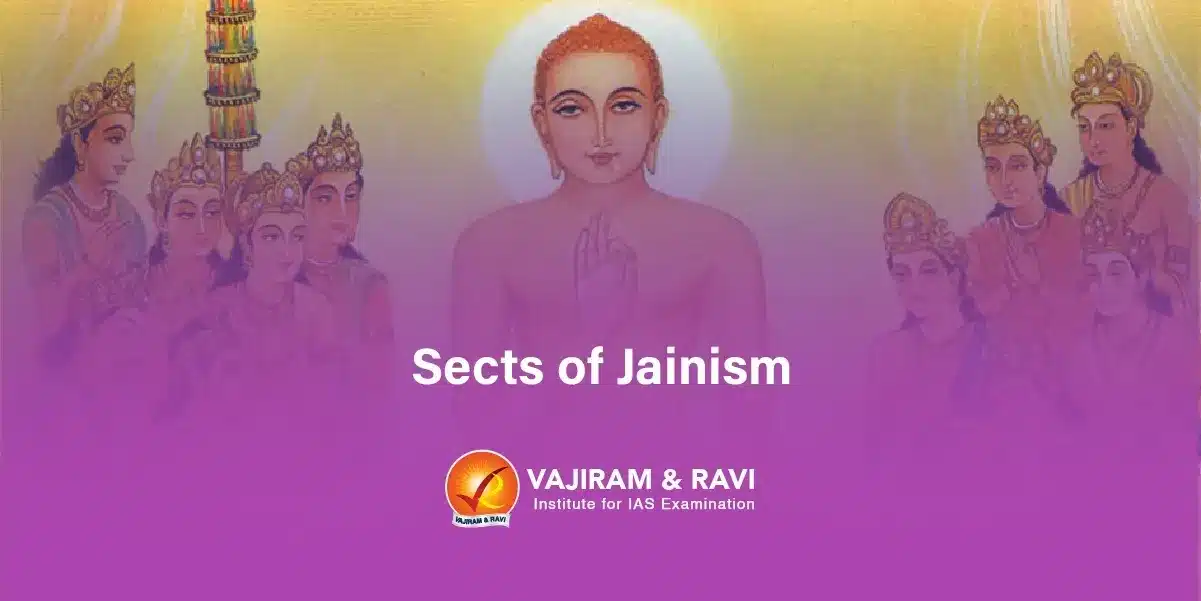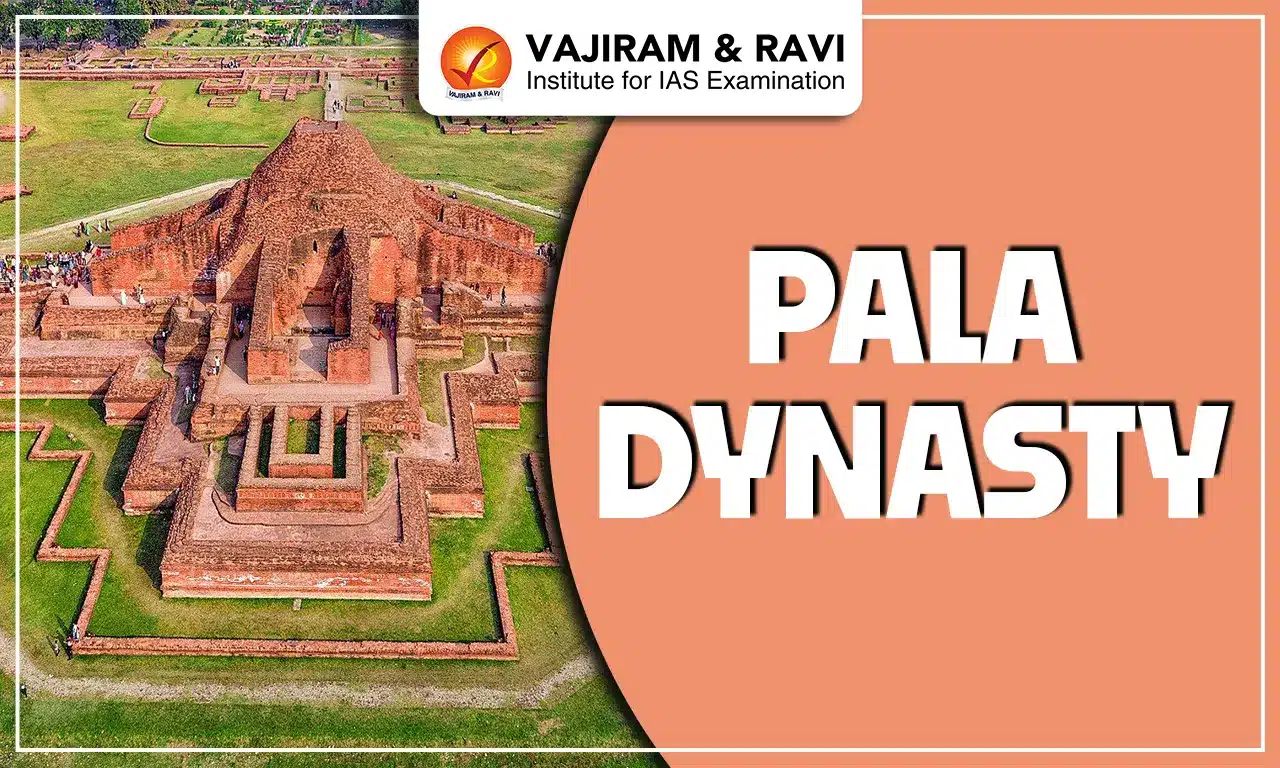Jainism has two main sects, theShvetambaras and the Digambaras. Shvetambara monks wear white clothes, whereas Digambara monks do not wear any clothes at all. Each of Jainism's major sects recognizes its own body of sacred scriptures, though many texts are shared by all.
According to the history of the Jaina religion up to Mahavira, sects, and sub-sects did not exist at that time. Each of the two major sects, the Digambara sect, and the Shvetambara sect, was subdivided into various major and minor sub-sects based on differences in acknowledging or interpreting religious texts and in religious practice.
Two Sects of Jainism
The Jain order has been divided into two major sects: Shvetambara and Digambara. This division occurred mainly due to famine in Magadh, which compelled a group led by Bhadrabahu and Chandragupta Maurya to move to South India (Shravan Belgola) in 298 BC.
- The leader of the group that stayed back at Magadha was Sthulbhadra.
- During the 12 years of famine, the group in South India stuck to strict practices, while the group in Magadha adopted a more lax attitude and started wearing white clothes.
- Later on, further splits occurred among both sections, the most significant of which renounced idol worship entirely and devoted itself to the worship of the scriptures.
- They were known as Terapanthis among Shvetambaras and Samaiyas among Digambaras. (This sect came into existence about the sixth century CE).
Shvetambara Sect
The Sanskrit term ‘Shvetambara’ means ‘white-clad’ and refers to the white clothing of monks and nuns of this order. The Shvetambaras have preserved many original scriptures. They believe that knowing that the true self consists of freedom from passions, realizing the power of the spiritual practice of non-attachment, and understanding the gradual order of undertaking the practice of the means of liberation, one can very well understand a monk's acceptance of clothing.
- The only essential point is that when one attains the state of perfect non-attachment, one definitely attains liberation, irrespective of one’s being nude or not. Clothing is not an obstacle to salvation.
- It is an attachment that acts as an obstacle to salvation.
- The Shvetambaras also allow women to join the monastic order on the assumption that they will achieve Nirvana.
- Holy Texts: Agamas (Angas, Anga-bahyas).
Sub-sects of Shvetambara
There are three sub-sects of the ‘Shvetambara’ sect, namely, Sthanakavasi, Murtipujaka, and Terapanthi.
| Sub-sects of Shvetambara | |
| Sthanakavasi |
- They believe in praying to saints rather than to an idol in a temple. - Saints wear a muhapatti near their mouth to cover it. |
| Murtipujaka (Deravasi) |
- They keep Tirthankara idols in their temples and worship them. - Saints do not wear a muhapatti. |
| Terapanthi |
- They pray to saints rather than idols in temples, such as Sthanakavasi. - Terapanthi saints also wear a muhapatti near their mouth to cover it. |
Digambara Sect
The literal meaning of the word digambara is sky-clad. The Digambara contend that perfection cannot be reached by anyone who wears clothing. They think that a man should abstain from food and possessions, including clothing, to become a saint.
- They also denied women the right to salvation. Women are said to be incapable of salvation because they cannot go without clothes.
- The Digambaras are adamant that there can be no salvation without nakedness.
- The Digambaras believe that no original canonical text exists now.
Sub-sects of Digambara
The Digambara sect, in recent centuries, has been divided into the following sub-sects:
Mula Sangh, Bisapantha, Terapantha, Taranapantha or Samaiyapantha, Gumanapantha, and Totapantha.
| Sub-sects of Digambara | |
| Mula Sangh |
- Associated with Acharya Kundakunda. - The oldest known from 430 AD. - Branches: Nandi Gana, Sena Gana, Deva Gana, Simha Gana |
| Bisapantha |
- They worship Tirthankaras, Yakshas and Yakshinis. - Their religious practices include aarti and offerings of flowers, fruits, and prasad offerings. - Bhattarakas are considered dharma gurus. - They are concentrated in Rajasthan and Gujarat. |
| Digambar Terapantha |
- Worship the idols with ‘ashtadravya’, but replace flowers and fruits with dry substitutes. - They do not accept Bhattarakas and worship only Tirthankaras. |
| Taranpantha |
- The Taranapanthis strongly refute idolatry, but they have their own temples where they keep their sacred books for worship. - Taranapanthis gives more importance to spiritual values and the study of sacred literature. |
Difference between Two Sects of Jainism
The main difference between the two sects of Jainism, i.e., Shvetambara and Digambara, are based on clothing, followers, teachings, literature, etc.
| Sects | Digambaras | Shvetambaras |
| Led by | Bhadrabahu | Sthulbhadra |
| View on Clothing |
- They do not wear clothes, as this sect believes in complete nudity. - Female monks, known as Aryikas, wear unstitched, plain white sarees. |
- They wear simple white clothes. |
| Question on women | - They believed that women could not be Tirthankaras and Malli was a man. | - They believe that Tirthankaras can be men or women. |
| Follow the teachings of | - Mahavira, that is, “Pancha Mahavratas”, to attain Kaivalya. | - Preachings of Parshvanatha, that is, only four restraints (except Brahmacharya). |
| Follow the Jain literature | - Prakrit Suttapahuda of Kundakunda. | - Believed in the validity and sacredness of the twelve angas and sutras. |
| Food for omniscient | - When a saint attains the status of kevali or Kevala-jnani, or omniscience, he no longer requires food. | - This view is not acceptable to the Shvetambaras. |
| Idols of Tirthankaras | - They represent the idols of Tirthankaras as nude. Unadorned and with downcast eyes in a contemplative mood. | - Depicts the idols of Tirthankars as wearing a loin-cloth adorned with jewels and with glass eyes inserted in the marble |
Last updated on December, 2025
→ Check out the latest UPSC Syllabus 2026 here.
→ Join Vajiram & Ravi’s Interview Guidance Programme for expert help to crack your final UPSC stage.
→ UPSC Mains Result 2025 is now out.
→ UPSC Notification 2026 is scheduled to be released on January 14, 2026.
→ UPSC Calendar 2026 is released on 15th May, 2025.
→ The UPSC Vacancy 2025 were released 1129, out of which 979 were for UPSC CSE and remaining 150 are for UPSC IFoS.
→ UPSC Prelims 2026 will be conducted on 24th May, 2026 & UPSC Mains 2026 will be conducted on 21st August 2026.
→ The UPSC Selection Process is of 3 stages-Prelims, Mains and Interview.
→ UPSC Result 2024 is released with latest UPSC Marksheet 2024. Check Now!
→ UPSC Prelims Result 2025 is out now for the CSE held on 25 May 2025.
→ UPSC Toppers List 2024 is released now. Shakti Dubey is UPSC AIR 1 2024 Topper.
→ UPSC Prelims Question Paper 2025 and Unofficial Prelims Answer Key 2025 are available now.
→ UPSC Mains Question Paper 2025 is out for Essay, GS 1, 2, 3 & GS 4.
→ UPSC Mains Indian Language Question Paper 2025 is now out.
→ UPSC Mains Optional Question Paper 2025 is now out.
→ Also check Best IAS Coaching in Delhi
Sects of Jainism FAQs
Q1. What are the two main sects of Jainism?+
Q2. Who were the Shvetambaras?+
Q3. What are the sects of Shvetambara?+
Q4. What are the subsects of Digambara?+
Tags: quest sects of jainism

















